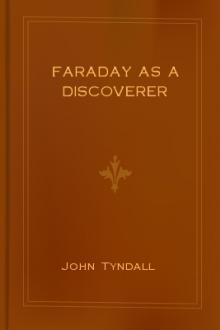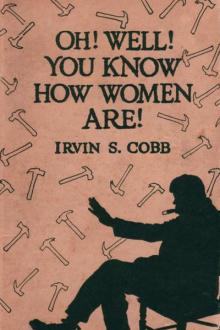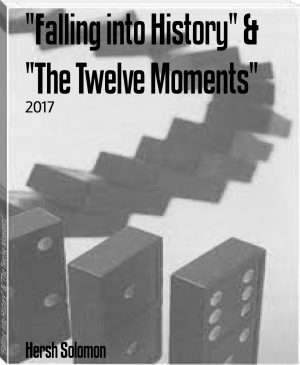The Chemical History of a Candle by Michael Faraday (detective books to read TXT) 📕

- Author: Michael Faraday
- Performer: -
Book online «The Chemical History of a Candle by Michael Faraday (detective books to read TXT) 📕». Author Michael Faraday
There are such curious conditions of flame, that it requires some cleverness and nicety of discrimination to distinguish the kinds of combustion one from another. For instance, here is a powder which is very combustible, consisting, as you see, of separate little particles. It is called lycopodium[7], and each of these particles can produce a vapour, and produce its own flame; but, to see them burning, you would imagine it was all one flame. I will now set fire to a quantity, and you will see the effect. We saw a cloud of flame, apparently in one body; but that rushing noise [referring to the sound produced by the burning] was a proof that the combustion was not a continuous or regular one. This is the lightning of the pantomimes, and a very good imitation. [The experiment was twice repeated by blowing lycopodium from a glass tube through a spirit-flame.] This is not an example of combustion like that of the filings I have been speaking of, to which we must now return.
Suppose I take a candle, and examine that part of it which appears brightest to our eyes. Why, there I get these black particles, which already you have seen many times evolved from the flame, and which I am now about to evolve in a different way. I will take this candle and clear away the gutterage, which occurs by reason of the currents of air; and if I now arrange a glass tube so as just to dip into this luminous part, as in our first experiment, only higher, you see the result. In place of having the same white vapour that you had before, you will now have a black vapour. There it goes, as black as ink. It is certainly very different from the white vapour; and when we put a light to it, we shall find that it does not burn, but that it puts the light out. Well, these particles, as I said before, are just the smoke of the candle; and this brings to mind that old employment which Dean Swift recommended to servants for their amusement, namely, writing on the ceiling of a room with a candle. But what is that black substance? Why, it is the same carbon which exists in the candle. How comes it out of the candle? It evidently existed in the candle, or else we should not have had it here. And now I want you to follow me in this explanation. You would hardly think that all those substances which fly about London, in the form of soots and blacks, are the very beauty and life of the flame, and which are burned in it as those iron filings were burned here. Here is a piece of wire gauze, which will not let the flame go through it; and I think you will see, almost immediately, that when I bring it low enough to touch that part of the flame which is otherwise so bright, that it quells and quenches it at once, and allows a volume of smoke to rise up.
I want you now to follow me in this point,—that whenever a substance burns, as the iron filings burnt in the flame of gunpowder, without assuming the vaporous state (whether it becomes liquid or remains solid), it becomes exceedingly luminous. I have here taken three or four examples apart from the candle, on purpose to illustrate this point to you; because what I have to say is applicable to all substances, whether they burn or whether they do not burn,—that they are exceedingly bright if they retain their solid state, and that it is to this presence of solid particles in the candle-flame that it owes its brilliancy.
Here is a platinum-wire, a body which does not change by heat. If I heat it in this flame, see how exceedingly luminous it becomes. I will make the flame dim, for the purpose of giving a little light only, and yet you will see that the heat which it can give to that platinum-wire, though far less than the heat it has itself, is able to raise the platinum-wire to a far higher state of effulgence. This flame has carbon in it; but I will take one that has no carbon in it. There is a material, a kind of fuel—a vapour, or gas, whichever you like to call it—in that vessel, and it has no solid particles in it; so I take that because it is an example of flame itself burning without any solid matter whatever; and if I now put this solid substance in it, you see what an intense heat it has, and how brightly it causes the solid body to glow. This is the pipe through which we convey this particular gas, which we call hydrogen, and which you shall know all about next time we meet. And here is a substance called oxygen, by means of which this hydrogen can burn; and although we produce, by their mixture, far greater heat[8] than you can obtain from the candle, yet there is very little light. If, however, I take a solid substance, and put that into it, we produce an intense light If I take a piece of lime, a substance which will not burn, and which will not vaporise by the heat (and because it does not vaporise, remains solid, and remains heated), you will soon observe what happens as to its glowing. I have here a most intense heat, produced by the burning of hydrogen in contact with the oxygen; but there is as yet very little light—not for want of heat, but for want of particles which can retain their solid state; but when I hold this piece of lime in the flame of the hydrogen as it burns in the oxygen, see how it glows! This is the glorious lime-light, which rivals the voltaic-light, and which is almost equal to sunlight. I have here a piece of carbon or charcoal, which will burn and give us light exactly in the same manner as if it were burnt as part of a candle. The heat that is in the flame of a candle decomposes the vapour of the wax, and sets free the carbon particles—they rise up heated and glowing as this now glows, and then enter into the air. But the particles when burnt never pass off from a candle in the form of carbon. They go off into the air as a perfectly invisible substance, about which we shall know hereafter.
Is it not beautiful to think that such a process is going on, and that such a dirty thing as charcoal can become so incandescent? You see it comes to this—that all bright flames contain these solid particles; all things that burn and produce solid particles, either during the time they are burning, as in the candle, or immediately after being burnt, as in the case of the gunpowder and iron-filings,—all these things give us this glorious and beautiful light.
I will give you a few illustrations. Here is a piece of phosphorus, which burns with a bright flame. Very well; we may now conclude that phosphorus will produce, either at the moment that it is burning or afterwards, these solid particles. Here is the phosphorus lighted, and I cover it over with this glass for the purpose of keeping in what is produced. What is all that smoke? That smoke consists of those very particles which are produced by the combustion of the phosphorus. Here, again, are two substances. This is chlorate of potassa, and this other sulphuret of antimony. I shall mix these together a little, and then they may be burnt in many ways. I shall touch them with a drop of sulphuric acid, for the purpose of giving you an illustration of chemical action, and they will instantly burn[9]. [The Lecturer then ignited the mixture by means of sulphuric acid.] Now, from the appearance of things, you can judge for yourselves whether they produce solid matter in burning. I have given you the train of reasoning which will enable you to say whether they do or do not; for what is this bright flame but the solid particles passing off?
[Illustration: Fig. 9.]
Mr. Anderson has in the furnace a very hot crucible,—I am about to throw into it some zinc filings, and they will burn with a flame like gunpowder. I make this experiment because you can make it well at home. Now, I want you to see what will be the result of the combustion of this zinc. Here it is burning—burning beautifully like a candle, I may say. But what is all that smoke, and what are those little clouds of wool which will come to you if you cannot come to them, and make themselves sensible to you in the form of the old philosophic wool, as it was called? We shall have left in that crucible, also, a quantity of this woolly matter. But I will take a piece of this same zinc and make an experiment a little more closely at home, as it were. You will have here the same thing happening. Here is the piece of zinc, there [pointing to a jet of hydrogen] is the furnace, and we will set to work and try and burn the metal. It glows, you see: there is the combustion, and there is the white substance into which it burns. And so, if I take that flame of hydrogen as the representative of a candle, and shew you a substance like zinc burning in the flame, you will see that it was merely during the action of combustion that this substance glowed—while it was kept hot; and if I take a flame of hydrogen, and put this white substance from the zinc into it, look how beautifully it glows, and just because it is a solid substance.
I will now take such a flame as I had a moment since, and set free from it the particles of carbon. Here is some camphine, which will burn with a smoke; but if I send these particles of smoke through this pipe into the hydrogen flame, you will see they will burn and become luminous, because we heat them a second time. There they are. Those are the particles of carbon re-ignited a second time. They are those particles which you can easily see by holding a piece of paper behind them, and which, whilst they are in the flame, are ignited by the heat produced, and, when so ignited, produce this brightness. When the particles are not separated, you get no brightness. The flame of coal-gas owes its brightness to the separation, during combustion, of these particles of carbon, which are equally in that as in a candle. I can very quickly alter that arrangement. Here, for instance, is a bright flame of gas. Supposing I add so much air to the flame as to cause it all to burn before those particles are set free, I shall not have this brightness; and I can do that in this way:—If I place over the jet this wire-gauze cap, as you see, and then light the gas over it, it burns with a non-luminous flame, owing to its





Comments (0)